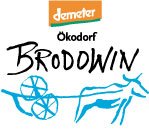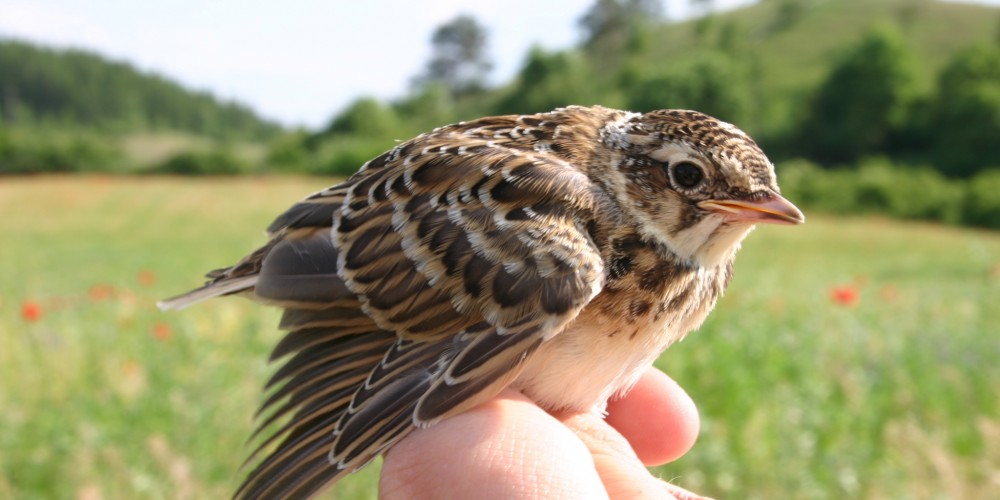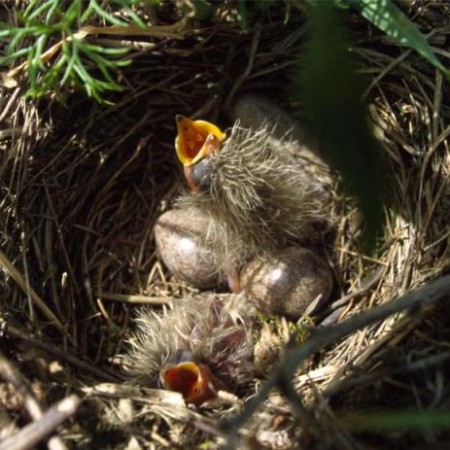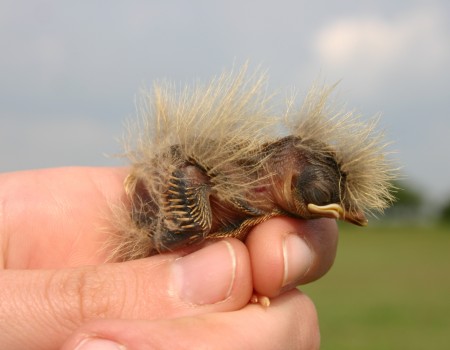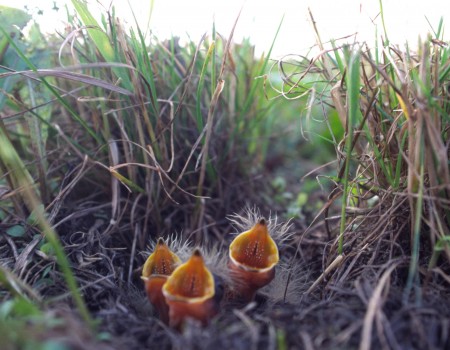Ground-nesting birds
Background
In the last 40 years the presence of many farmland birds has strongly decreased. Among them are the Skylark (Alauda arvensis), the Corn Bunting (Emberiza calandra) and the Grey Partridge (Perdix perdix). These species prefer open landscapes, and are therefore dependent on our agricultural landscape. Fertilisation, close-grained stocks or the frequent mowing of grasslands pose a threat to these birds.
The Skylark prefers to build its nest in useful forage grass. In spring, when plants have reached a certain height, it lays its eggs in small hollows. The nests of ground-nesting birds are extremely vulnerable to mechanical tillage and frequent mowing.
The absence of pesticides and spacious grain stocks in organic farming positively affects the presence of farmland birds. Yet, this is still not sufficient for us. We want to use specific measures to stabilise the number of common farmland birds on our grounds once more.
